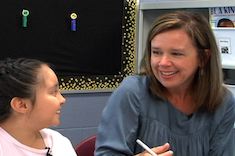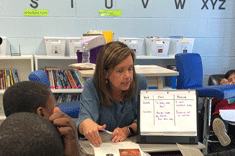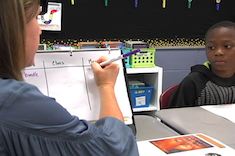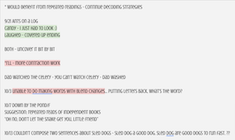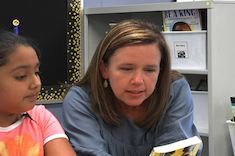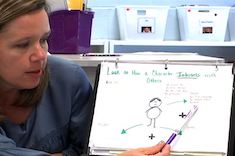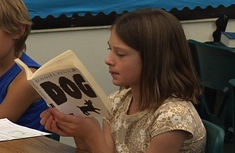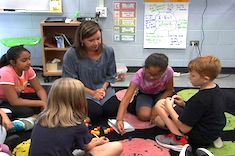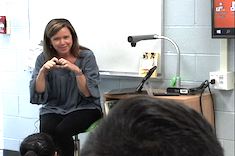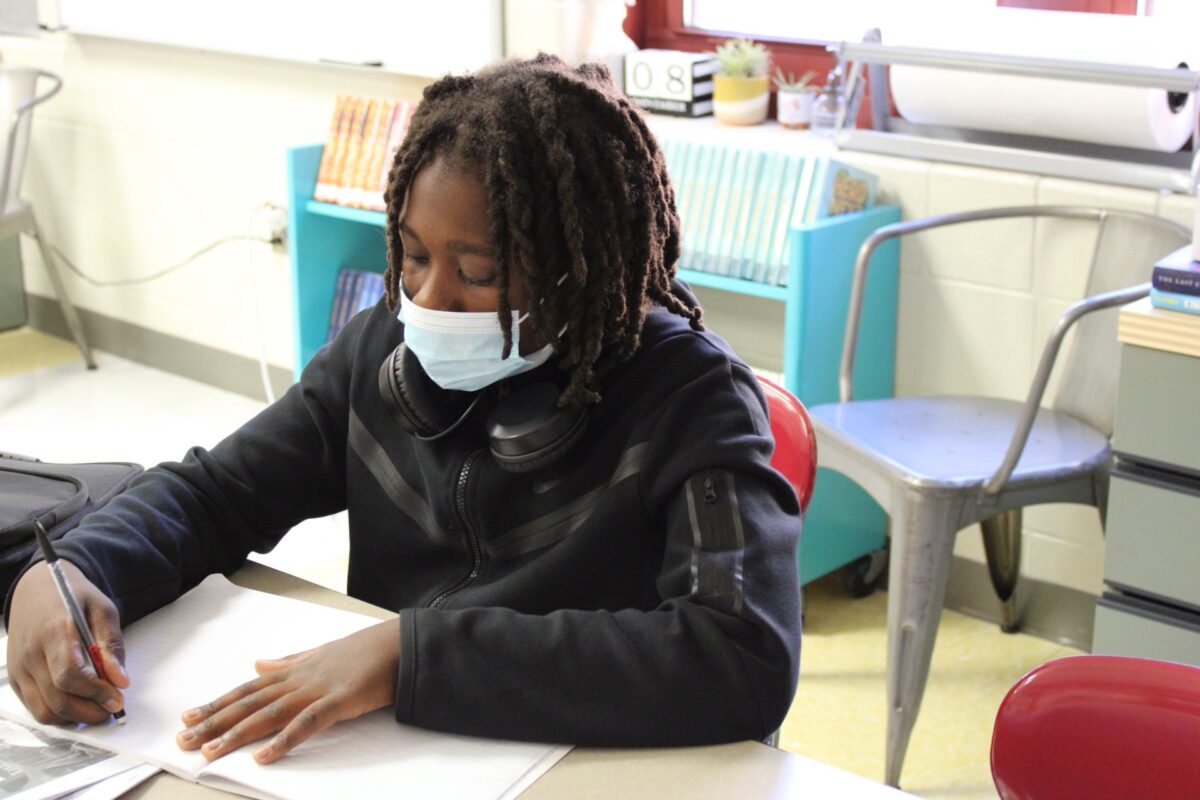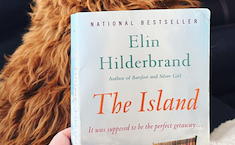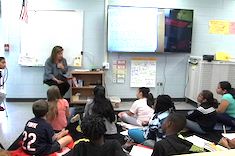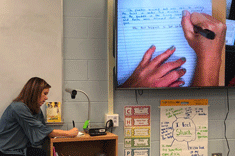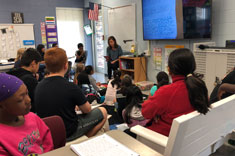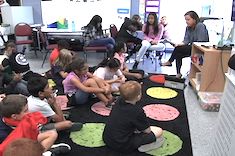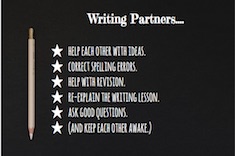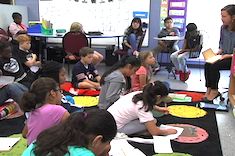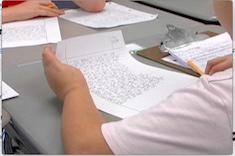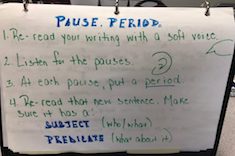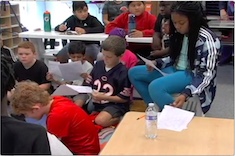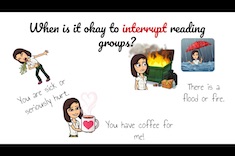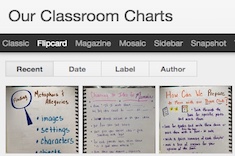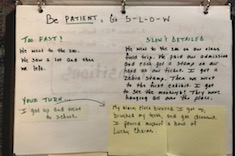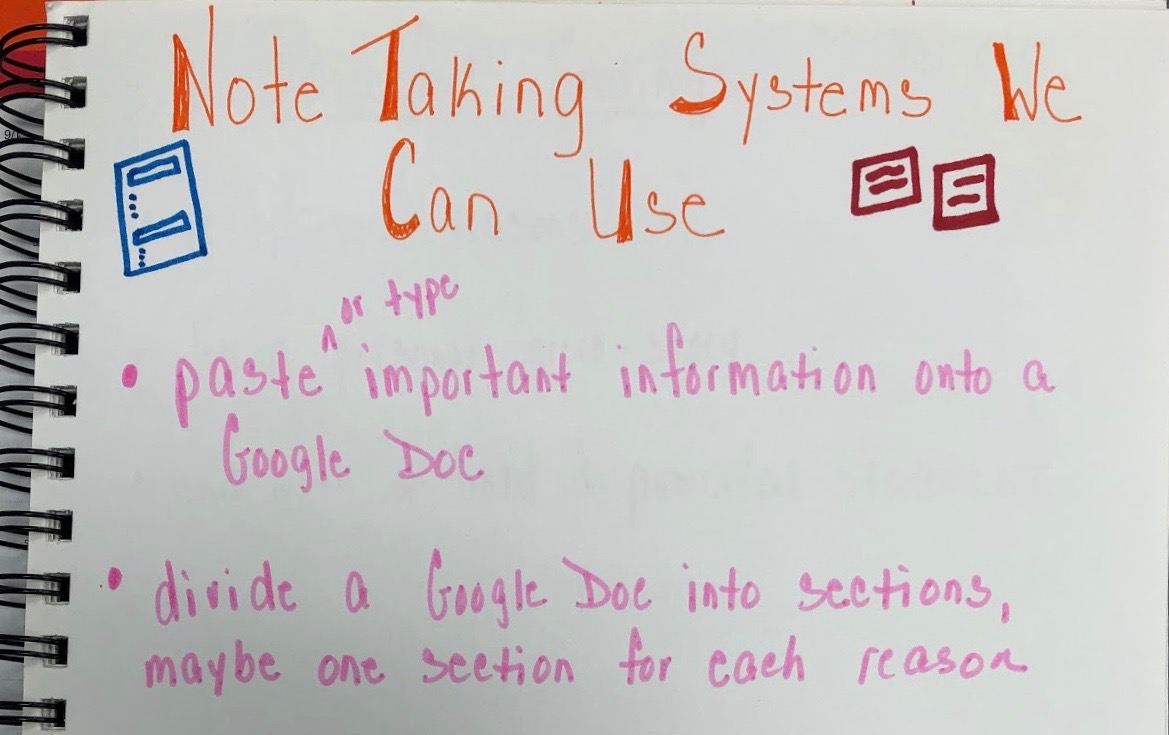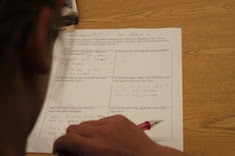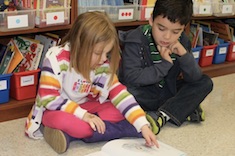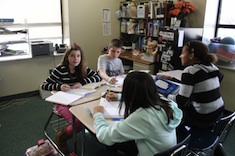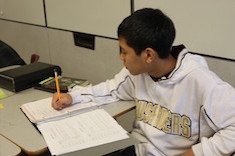Dana Murphy
Dana Murphy has been an educator for over two decades in Illinois. She has served as an elementary teacher and instructional coach. Dana wrote for the Two Writing Teachers blog for several years, and is now teaching elementary school in the suburbs of Chicago. Follow Dana on Twitter @DanaMurphy__.
Latest Content
Five Things I’ve Used AI for This Week
From lesson planning to generating decodable texts, Dana Murphy shares five ways she uses AI as a reading interventionist.
What Is ORF Anyway?
Dana Murphy reminds us that teaching students to read faster is often a surface-level answer to a much deeper question. Reading is a complex process; if you’re wondering what to do about oral reading fluency scores, then Dana offers powerful encouragement.
How to Intensify an Intervention
What happens when students’ reading data takes a downward trend? Dana Murphy encourages us to be confident and intensify a reading intervention with three practical moves.
Responding to Appeals for Help
Dana Murphy outlines three options to respond to a student who is stuck when reading and looking to the teacher for the answer. By being mindful when students appeal for help, we can make intentional, on-the-spot decisions to empower students to become better readers.
Teaching Students to Self-Monitor
Dana Murphy explicitly teaches students how to self-monitor through modeling and using an anchor chart that clearly defines each step.
Know/Wonder Chart
Dana Murphy shares the power of a Know/Wonder chart to peek inside the minds of intermediate readers and provide direction beyond assessment data.
Creating a Teacher Notetaking System
Dana Murphy, a reading specialist, guides all teachers in ways to develop a notetaking system that works perfectly because it is personalized.
My Teaching Toolbox (Part 2)
Dana Murphy reminds us that having a teaching toolbox makes planning efficient and effective. In this second installment of a two-part series, Dana offers two additional approaches to delivering strong reading instruction.
Small Shifts That Make a Big Difference
Dana Murphy names two practices that made a big difference in her work as a reading specialist. You may be surprised at the simplicity and smallness that led to powerful gains in her readers.
My Teaching Toolbox (Part 1)
Every now and then we make the classic teaching mistake: assign rather than teach. Dana Murphy curated her favorite teaching tools that help her stay inspired to continually teach students. This is part one of a two-part series.
Getting Ready to Read
Dana Murphy encourages us to go beyond teaching students to recognize different genres by helping them establish expectations of genres so they’ll be ready to read.
Five Ways to Teach Fluency
Dana Murphy reminds us of five ways to teach fluency…especially when reading seems laborious.
Moving Beyond Asking Questions
Dana Murphy comes to a lesson about asking questions in a curriculum resource and realizes it is not what her students need. She has designed a lesson to make asking questions more meaningful and useful for her students.
Identifying Story Elements
Dana Murphy shares a whole-class conversation about identifying the climax of the plot. She reminds us that defining story elements is not always clear-cut.
The Power of an Anchor Chart in a Digital World
Dana Murphy reminds us of the power of an anchor chart in a digital world.
Engaging Kids in Reading Intervention
Dana Murphy shares ways to make reading intervention a high-interest time for students.
Stay Sharp Series: Seek Out Others
In our Stay Sharp series, Dana Murphy shares the ways she seeks out educators who help her stay sharp. Her key sources are Twitter, the educators in her school, and reading the Big Fresh.
Nourish a Sense of Belonging
Dana Murphy shares ways to nourish a sense of belonging in all students.
The Tale of Two Boys
Dana Murphy shares a moment when she realized she needed to educate herself and dismantle some white-centered teaching practices.
Setting Up the Intervention Room
Dana Murphy guides reading specialists in setting up intervention rooms to welcome readers.
What Matters More
Dana Murphy shares that by asking “What matters most?” she can make decisions that allow her literacy instruction to be student-centered and authentic.
Studying Character in Intermediate Grades
Dana Murphy leads us in a step-by-step process to take tried-and-true reading strategies to a more sophisticated level to support students as they grow in interpretation.
Maintaining an Adult Reading Life
Are you wondering how to maintain a reading life as a busy adult? Dana Murphy shares her secrets and insights that will have all of us prioritizing our own reading lives.
Determining Importance in Fiction
Dana Murphy guides us in listening and responding to students during strategy-building lessons to grow readers. In this example, she shows the complexity and nuances of direct instruction to build comprehension strategies.
Making Data Review More Personal
Dana Murphy describes an approach to “data-review days” that looks beyond numbers to the faces of kids and talks about all kids in all of their humanity.
Fifth-Grade Writing Conference: The Heart of the Story
Dana Murphy confers with fifth grader Rebecca about her writing draft, and they discuss the heart of her story.
The Choice Literacy Book Club Discusses My Hero Academia, Volume 1
The Choice Literacy Book Club discusses My Hero Academia, Volume 1 by Kohei Horikoshi.
Hidden Treasures Podcast with Dana Murphy
Dana Murphy candidly discusses keeping a positive mindset and approaching her students with an abundance of grace.
COVID Silver Linings: Positive Changes in Teaching Practices
Dana Murphy outlines the teaching practices that she learned from remote teaching and plans to carry with her upon returning to a physical classroom.
Extending Invitations in Workshop: Ways to Empower Student Choice
Dana Murphy suggests three ways to empower student choice in workshop and get more students to accept the invitations we offer.
Reading Minilesson: Theme
Dana Murphy leads a reading minilesson on theme in fifth grade, explaining how students might think more deeply about themes through characters’ problems.
Balancing Conferences and Small Groups
Balancing small groups and conferences is essential for transferring learning from lessons and units, and it’s one of the trickiest tasks for teachers. Dana Murphy explains how she works toward balance in her classroom, weighing everything from the timeline of the unit to the intensity of the minilesson.
Fifth-Grade Reading Conference: Previewing
Dana Murphy confers with Krisha over her reading, talking about the value of using a book’s back cover for previewing.
Fifth-Grade Group: Understanding Characters
Dana Murphy meets with a group of fifth graders to explore character development in their reading.
Minilesson: Revising Writing
Dana Murphy leads a minilesson in fifth grade on revising narrative writing.
Fifth-Grade Vocabulary Group
Dana Murphy meets with a group of fifth graders to work on strategies for understanding unknown words.
Writing Partners
Partner work is an essential component of many literacy workshops. Dana Murphy explains how she is intentional in building thoughtful routines and expectations for partner work in her fifth-grade classroom.
Building Conversation Skills in Book Clubs
Fifth graders use a visual tool to help them build on each other’s ideas in book clubs. They are applying a strategy demonstrated in an earlier minilesson taught by Dana Murphy.
Minilesson: Building Conversations in Book Clubs
Dana Murphy leads a minilesson on book club conversations, using a fishbowl strategy and building blocks to support more sophisticated discussions.
Writing Endings Minilesson in Fifth Grade
A classic anchor text for many teachers is Charlotte’s Web. In this week’s video, Dana Murphy seamlessly integrates a brief excerpt from it into a writing minilesson on endings in her fifth-grade classroom.
Reinforcing Workshop Norms
In this quick video, Dana Murphy shows how she leads her fifth graders with a kinesthetic reminder of workshop norms before beginning independent work.
Fifth-Grade Small Group: Paragraphs
Dana Murphy meets with a group of fifth graders to help students develop paragraphing skills, using a peer’s mentor text.
Teaching Conventions in Small Groups
Dana Murphy finds it is best to teach conventions in small, targeted groups in her fifth-grade classroom. She explains how she designs and leads these groups.
Writing Share Circle in Fifth Grade
Here are some excerpts from a writing share circle in Dana Murphy’s fifth-grade classroom. Each student shares a one- to two-sentence excerpt from the writing they completed during the day’s workshop.
Circle Share
Sometimes “winging it” because we don’t have plans can lead to the most profound learning. Dana Murphy dreams up a quick circle share, and what follows is magic.
Minimizing Interruptions During Workshops
Dana Murphy explains why a system for minimizing interruptions is essential in her fifth-grade classroom, and how she keeps the process of creating and using it as simple as possible.
A New System for Anchor Charts
Dana Murphy develops a love-hate relationship with the faded anchor charts peeling away from her classroom walls. She finds a move to anchor charts in a sketchbook and a website for chart images improves the quality of her charts and their usefulness.
A Better Status of the Class
Dana Murphy finds that adding numbers of pages to her status-of-the-class list for reading makes all the difference in assessing students’ growth and needs as readers.
Setting and Using Classroom Norms
Class promises, rules, and norms—most teachers set them at the start of the year. But how can we make sure students live them? Dana Murphy shares some tips from her fifth-grade classroom.
A Homework-Free Classroom
Dana Murphy looks at homework from the twin perspectives of mom and teacher, and finds she hates it from both views.
Using a Strategy Notebook in Small-Group Instruction
So many needs for groups, and so little time. Dana Murphy finds that a strategy notebook is invaluable as a teaching aid in her fifth-grade small groups.
Student-Centered Notes
Dana Murphy discovers that what works for one student doesn’t work for another when it comes to note-taking. She provides options and then hosts a gallery walk so everyone can discover what works best for them.
Alternatives to Graphic Organizers
Dana Murphy is dismayed by the ways graphic organizers can sometimes limit student creativity. She uses writing notebooks and a few other strategies to begin to wean her fourth graders from depending too much on organizers.
Forming Groups Using a Planner
Dana Murphy explains how her small-group planner is an essential tool for organizing groups in her fourth-grade classroom.
Doing the Writing in a Unit
One way to keep your instruction fresh in a required writing unit is to take on the tasks and topics yourself. Dana Murphy finds completing the assignments herself is well worth her time, and gives her a treasure trove of notebook entries to use in her conferring.
And This Makes Me Think
Dana Murphy considers how teachers can make writing workshop routines more cozy and like writing at home.
Conferring Notes
When it comes to conferring notes, form needs to follow function. Dana Murphy quit looking for the perfect template, and started focusing on what kinds of notes are most helpful.
Authentic Reading in Kindergarten
Dana Murphy realizes the best way to introduce students to reading in kindergarten is to apply the principles that work at home with her own children.
Fresh Starts Through Community Building
Early January is a great time for relationship resets in classroom communities. Dana Murphy finds community-building activities may be more helpful than just a review of classroom rules and norms.
Writing Empathy
Dana Murphy explains why teachers can have true empathy with student writers only if they write themselves, and chronicles the difference between a typical and an empathetic response in a writing conference.
Sketchnoting as a Response to Reading
Dana Murphy tries sketchnoting during professional development, and soon finds herself sharing the fun technique with students. They hone their skills during read alouds and while annotating texts.
Getting to Know Writers: Using Quotes
Dana Murphy concludes her series on getting to know writers with an activity on responding to quotes. This activity is a great baseline for gauging attitudes and previous experiences early in the year.
Getting to Know Writers: The Writing Process Survey
Dana Murphy continues her series on getting to know writers early in the year. In this installment, she explains how to use a simple six-question survey to help teachers and students explore differences in writing routines and habits.
Getting to Know Writers: Introduction
Dana Murphy writes about the litmus tests we give writing teachers to analyze whether or not they are teaching the "right" way, when we might better serve students by focusing on the six truths of writing.
Exploring the Writing Process
Dana Murphy considers the differences between authentic writing processes and what we teach in schools.
Forming Groups Using a Planner
Dana Murphy explains how her small-group planner is an essential tool for organizing groups in her fourth-grade classroom.
Browse Content By
Type
Category
- Assessment Tools
- Big Fresh Archives
- Booklists
- Choice Numeracy
- Classroom Design
- Common Core
- Community Building
- Conferring
- Content Literacy
- Digital Literacy
- English Language Learners
- Equity
- Family Relations
- Free Samples
- Guiding Groups
- Leadership
- Literacy Coaches
- Mentor Texts
- Minilessons
- New Teacher Mentors
- Podcasts
- Poetry
- Quote Collections
- Reading Strategies
- Self Care
- Struggling and Striving Learners
- Talking and Listening
- Teacher Study Groups
- Teaching Reading
- Teaching Writing
- Word Study and Vocabulary
Author
- Melissa Quimby
- Nawal Qarooni
- Gwen Blumberg
- Julie Cox
- The Lead Learners
- Hannah Tills
- Josie Stewart
- Ruth Metcalfe
- Mallory Messenger
- Becca Burk
- Jodie Bailey
- Vivian Chen
- Mary Brower
- Tiffany Abbott Fuller
- Stephanie Affinito
- Ruth Ayres
- Leigh Anne Eck
- Heather Fisher
- Shari Frost
- Julie Johnson
- Suzy Kaback
- Gigi McAllister
- Shirl McPhillips
- Melanie Meehan
- Cathy Mere
- Debbie Miller
- Tara Barnett and Kate Mills
- Tammy Mulligan
- Dana Murphy
- Bitsy Parks
- David Pittman
- Brenda Power
- Heather Rader
- Matt Renwick
- Mandy Robek
- Christy Rush-Levine
- Gretchen Schroeder
- Jen Schwanke
- Brian Sepe
- Katherine Sokolowski
- Stella Villalba
- Jennifer Vincent
Grade Level
Choice Literacy Membership
Articles
Get full access to all Choice Literacy article content
Videos
Get full access to all Choice Literacy video content
Courses
Access Choice Literacy course curriculum and training

